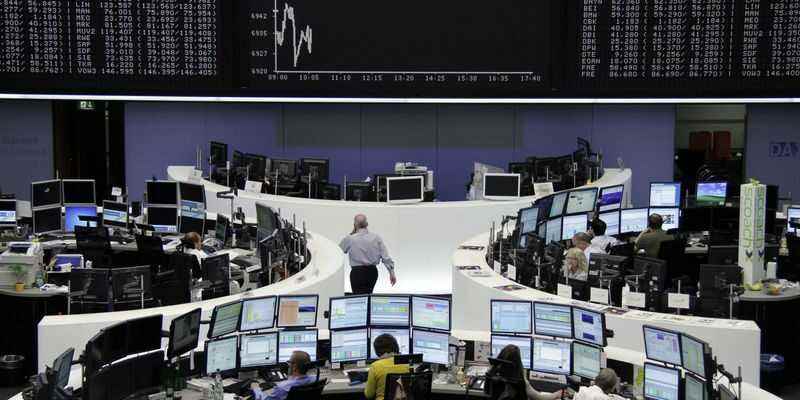PARIS (Reuters) – The main European stock markets are expected to start falling again at the opening on Wednesday, after Wall Street’s decline at the end of the session and before the publication of monthly consumer price figures in the United States, the meeting you economic riskiest of the week.
Index futures suggest a drop of 0.48% for the Dax in Frankfurt, 0.23% for the FTSE 100 in London and 0.43% for the EuroStoxx 50. As for the CAC 40 in Paris, it could yield around 0.4% according to the first indications available.
The US Consumer Price Index (CPI), to be released at 12:30 GMT, is expected to rise 1.1% in June from May and 8.8% year on year according to consensus Refinitiv, which would be a new 40-year high.
A figure in line with or above the consensus could support the scenario of a continuation of the rapid tightening of monetary policy by the Federal Reserve, even at the risk of a recession.
The International Monetary Fund (IMF) has also revised its growth forecasts for the United States downwards once again on Tuesday: it now expects GDP growth to be limited to 2.3% this year and 1.0 % next year.
Ahead of the CPI, investors will be watching for final inflation figures from Germany (06:00 GMT) and France (06:45 GMT).
As another illustration of the fact that rising prices remain by far the number one concern of political and monetary authorities, the South Korean and New Zealand central banks have raised their main key interest rate by half a point.
In China, foreign trade statistics for the first half exceeded expectations with a 13.2% year-on-year growth in exports and a 4.8% increase in imports.
VALUES TO FOLLOW:
AT WALL STREET
The New York Stock Exchange ended lower on Tuesday as fears of a recession prompted investors to be cautious on the eve of the release of consumer price figures and two days before the unofficial start of the earnings season.
The Dow Jones Index fell 0.62%, or 192.51 points, to 30,981.33, the Standard & Poor’s 500 lost 35.63 points, or 0.92%, to 3,818.80 and the Nasdaq Composite lost fell 107.87 points (-0.95%) to 11,264.73.
All three had a choppy session but the trend weakened late in the session. The 11 major S&P sector indices ended in negative territory, with the energy index losing 2.03% with the drop in oil prices.
On the rise, Boeing jumped 7.42% after reporting monthly deliveries at their highest since March 2019.
IN ASIA
On the Tokyo Stock Exchange, the Nikkei index gained 0.42% less than an hour from closing, driven by the values of semiconductors and air transport against a backdrop of falling hydrocarbon prices, but uncertainty on the evolution of prices and on the quality of the results of listed companies limits its progression.
In China, shares are trying to rebound after three consecutive sessions of decline, based on foreign trade figures: the Shanghai SSE Composite is up 0.36% and the CSI 300 0.54%.
CHANGES
On the currency market, the euro remains close to parity with the dollar at 1.0031 but some traders expect this threshold to be lowered during the day if US inflation hits a new high. 40 years old.
“I believe the US dollar will continue to appreciate if the US CPI is stronger than expected,” said Joe Capurso, strategist at Commonwealth Bank of Australia.
The single currency is also flirting with its 200-day average against the pound sterling.
RATE
Yields on US government bonds are up slightly, at 2.9706% for the ten-year and 3.0491% for the two-year, but the highlight of the moment is the increasingly marked inversion of the curve rates on the two- to ten-year segment.
The spread between the two maturities peaked at 12.4 basis points on Tuesday, its highest level since March 2010 according to Refinitiv data.
OIL
The oil market is hesitant after its sharp decline the day before, uncertainty about US inflation stifling for the moment any hint of a rebound.
Brent rose 0.14% to $99.63 a barrel but US light crude (West Texas Intermediate, WTI) was virtually unchanged at $95.90.
They lost 7.1% and 7.9% respectively on Tuesday after a volatile session, with many participants selling positions before the economic and financial deadlines for the second part of the week.
(Written by Marc Angrand, with Rae Wee and Tom Westbrook in Singapore, editing by Matthieu Protard)
Copyright © 2022 Thomson Reuters
